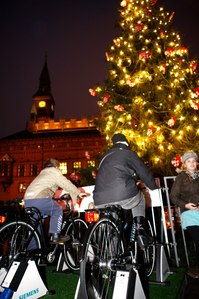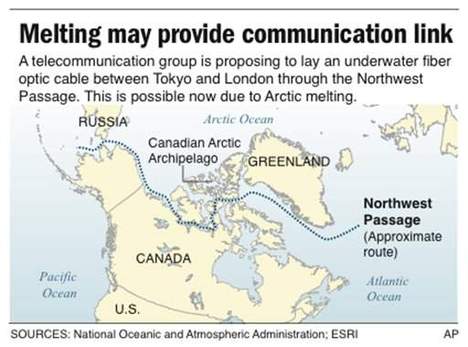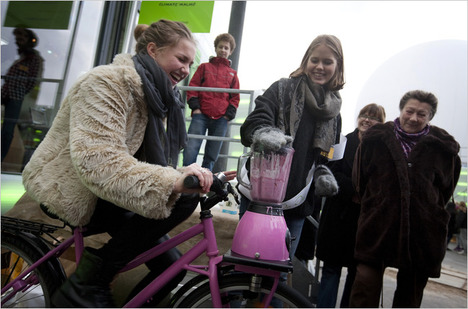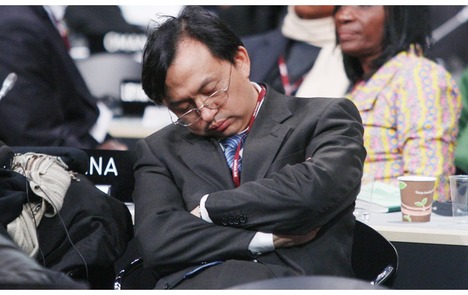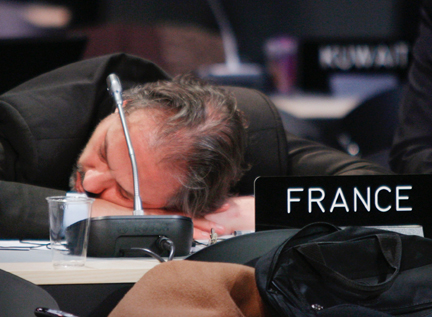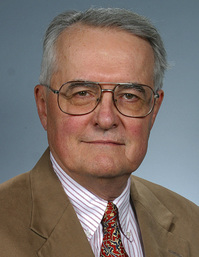(p. A10) As dozens of developing countries threatened to walk out of the Copenhagen climate-change summit, thousands of NGOs, journalists, lawyers, activists were still trying to get in.
The thousands queued from the early morning into the afternoon on Monday to register for the summit but found themselves in a line that barely budged for most of the day. Only those who already had accreditation — obtained during the first week of the summit or over the weekend — were let in; the rest braved subzero temperatures for some glimpse of a breakthrough.
Would-be attendees chanted “Let us in!” to Danish policemen ringing the Bella Center.
United Nations officials announced at one point that the process of accreditation would stop at 6 p.m. today, prompting boos and catcalls and cries of “shame” from those in line. One sign declared: “This is what UN efficiency looks like.”
For the full story, see:
Guy Chazan. “Copenhagen Dispatches; Some Walk Out of Gathering, But Many More Want In.” The Wall Street Jounal (Tues., December 15, 2009): A10.
(Note: the online version of the commentary had the title “Thousands Line Up for Climate Conference” and the date December 14, 2009.)

